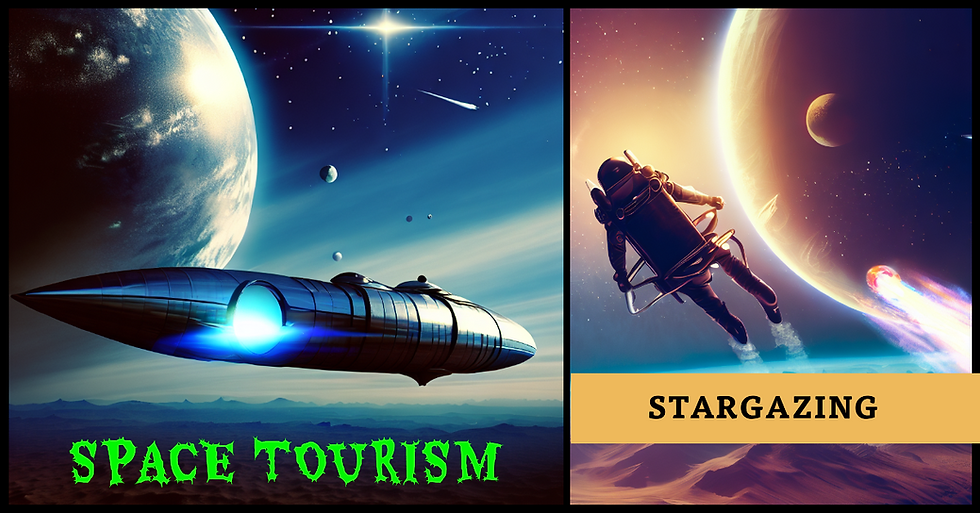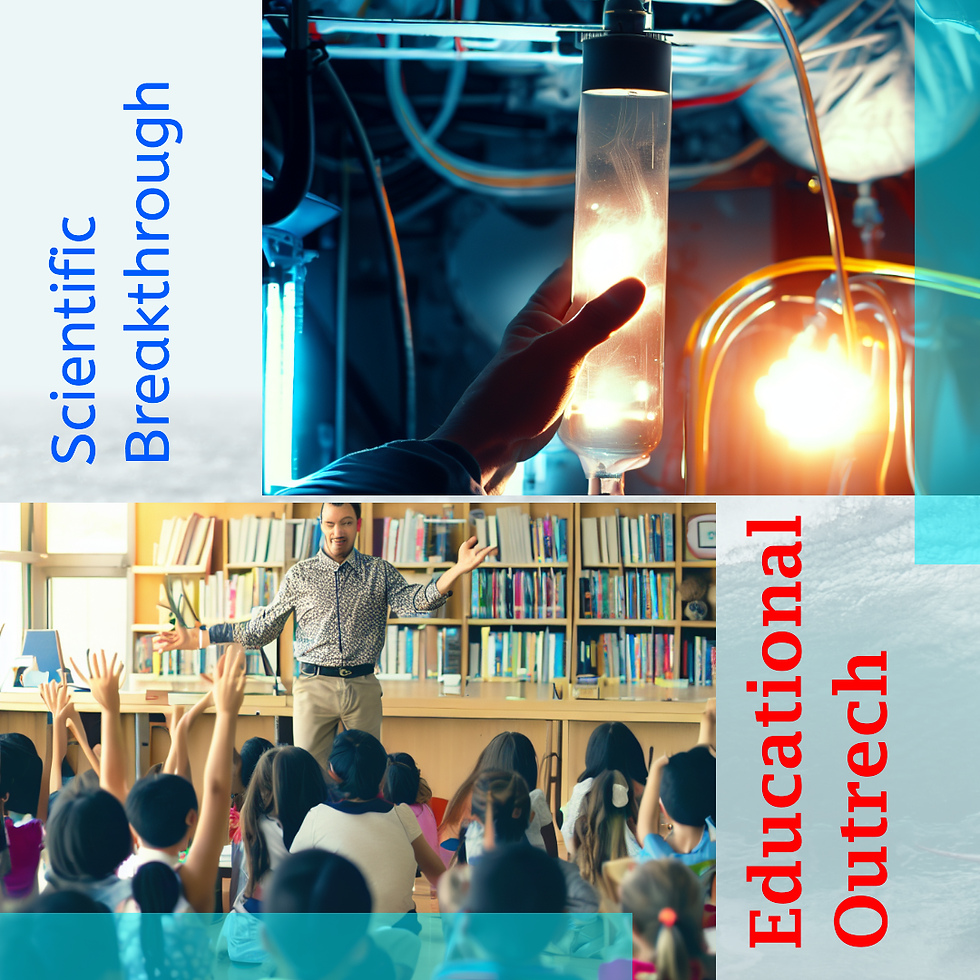Space, once the exclusive domain of astronauts and government space agencies, is opening its doors to a new breed of explorers - space tourists. This emerging industry is not just rewriting the rules of space exploration but also reshaping our perceptions of the final frontier. In this comprehensive and enlightening article, we'll embark on an exciting journey through the world of space tourism.

We'll explore its historical origins, delve into the cutting-edge technology powering this revolution, discuss the economic implications, examine the scientific potential, and address the environmental considerations. By the end of this cosmic voyage, you'll understand why space tourism is not just a buzzworthy topic but a bona fide revolution in the making.
The Historical Roots of Space Tourism
The dream of space tourism is not a recent phenomenon; it's a culmination of decades of fascination and visionary thinking. To appreciate its significance, we must trace its historical roots.

Visionaries and Science Fiction: The seeds of space tourism were sown in the imaginations of visionaries and science fiction authors.
The works of luminaries like Arthur C. Clarke and the captivating visions of films such as "2001: A Space Odyssey" ignited public fascination with the cosmos. These early sparks planted the idea that space travel could one day become a reality.
Pioneers: Dennis Tito and Anousheh Ansari: The dream took a giant leap forward with the groundbreaking journeys of Dennis Tito and Anousheh Ansari. In 2001, Dennis Tito became the world's first paying space tourist when he ventured to the International Space Station (ISS) aboard a Russian Soyuz spacecraft. His journey marked a historic milestone, demonstrating that space was no longer reserved solely for astronauts.
Anousheh Ansari followed in Tito's footsteps in 2006, becoming the first female space tourist. Her voyage to the ISS underscored the growing interest in commercial space travel and the potential for private individuals to explore space.
Technological Advancements: Enabling Space Tourism
The realization of space tourism hinges on monumental technological advancements in rocketry, spacecraft design, and launch systems. Private space companies are at the forefront of these breakthroughs.

Reusable Rockets: A pivotal innovation in the space tourism industry is the development of reusable rockets. Companies like SpaceX, led by visionary entrepreneur Elon Musk, have engineered rockets capable of multiple launches and landings.
This groundbreaking technology has significantly reduced the cost of space travel, making space tourism more economically viable.
Cutting-Edge Spacecraft: Spacecraft designed for space tourism have undergone revolutionary transformations. Suborbital spaceplanes like Virgin Galactic's SpaceShipTwo and Blue Origin's New Shepard feature state-of-the-art technology.
These spacecraft boast spacious cabins equipped with large windows that offer panoramic views of Earth and the cosmos. Safety and passenger experience are paramount in their design.

Orbital Space Tourism: Beyond suborbital flights, the future of space tourism includes orbital missions. Companies like SpaceX plan to offer orbital space tourism experiences, taking civilians on journeys beyond Earth's atmosphere.
These missions could entail visits to the ISS, circumnavigations of the Moon, and even trips to Mars. Such ambitious plans are only conceivable due to advancements in spacecraft technology, safety protocols, and orbital infrastructure.
Economic Implications: The Thriving Space Tourism Ecosystem
The economic implications of space tourism are far-reaching and extend well beyond ticket sales. The space tourism industry fosters revenue generation, job creation, and innovation across various sectors.

Job Creation: Space tourism is poised to create a multitude of jobs, spanning spacecraft manufacturing, maintenance, spaceport operations, and tourism-related services. As the industry expands, it will require skilled professionals in diverse fields, contributing to job growth in both established and emerging space tourism markets.
Innovation Catalyst: The competitive nature of the space tourism industry serves as a catalyst for innovation. Companies are investing heavily in research and development, exploring novel propulsion technologies, and enhancing safety measures. These innovations not only benefit space tourism but also have broader applications in space exploration and transportation.
Tourism Infrastructure Development: Space tourism has sparked interest in developing dedicated spaceports and tourism infrastructure. Spaceports worldwide are undergoing expansions and upgrades to accommodate suborbital and orbital space tourism activities. This infrastructure development creates opportunities for local economies and businesses catering to the space tourism industry.
Scientific Breakthroughs: The Dual Role of Space Tourism
Space tourism is not solely about leisure and adventure; it also serves as a platform for scientific research and educational outreach.

Scientific Payloads: Many space tourism missions include scientific payloads, enabling researchers to conduct experiments in microgravity or gather data in the unique space environment.
These missions contribute valuable insights to fields such as materials science, biology, and Earth observation. In this sense, space tourism becomes a conduit for advancing scientific knowledge.
Educational Outreach: Space tourism missions often incorporate educational outreach programs, engaging students and the general public.
These initiatives inspire interest in STEM (science, technology, engineering, and mathematics) fields and motivate the next generation of scientists, engineers, and astronauts. By making space more accessible, space tourism fosters a deeper connection between the public and the universe.
Environmental Considerations: Balancing Progress and Sustainability
While space tourism offers unparalleled opportunities, it also raises environmental concerns, particularly concerning the environmental impact of rocket launches. As we venture into space, it is essential to strike a balance between technological progress and environmental sustainability.

Emissions Reduction Initiatives: Space tourism companies are actively exploring methods to reduce their environmental footprint. Efforts include the development of reusable rocket technology, which significantly decreases emissions associated with space launches. Additionally, research into environmentally friendly propellants and sustainable launch practices is ongoing.
Regulatory Frameworks: To address environmental concerns and ensure the safety of space tourism activities, regulatory bodies such as the Federal Aviation Administration (FAA) in the United States are working on comprehensive guidelines and regulations. These frameworks aim to establish industry standards, promote safety, and mitigate environmental impact.
Safety First: Mitigating Risks in Space Tourism
Safety remains paramount in space tourism. Companies are committed to rigorous testing, safety protocols, and risk management strategies to minimize the inherent risks associated with space travel. Ensuring the well-being of passengers and crew is a top priority, and space tourism providers collaborate closely with regulatory agencies to uphold safety standards.
Conclusion: A Cosmic Revolution Unfolds
In conclusion, space tourism heralds the dawn of a new era in commercial space travel. It transcends the boundaries of science fiction and has evolved into a thriving industry with the potential to reshape our relationship with the cosmos. From suborbital flights that provide a taste of weightlessness to orbital missions promising journeys beyond Earth, space tourism offers a tantalizing glimpse into the future of human exploration.
As technological advancements continue to drive down costs and expand accessibility, space tourism opens doors to diverse opportunities: economic growth, scientific discovery, educational outreach, and a deeper connection between humanity and the universe. However, as we reach for the stars, it is imperative to navigate this cosmic frontier with care, striking a harmonious balance between progress, sustainability, and the safety of all those who embark on this extraordinary journey.
Space tourism represents the promise of a cosmic revolution, and we stand at the threshold of a new era in space exploration. As we look to the skies, the universe beckons, and the future of space tourism unfolds before our eyes, promising to fulfill humanity's age-old dream of venturing beyond the stars.

Comments